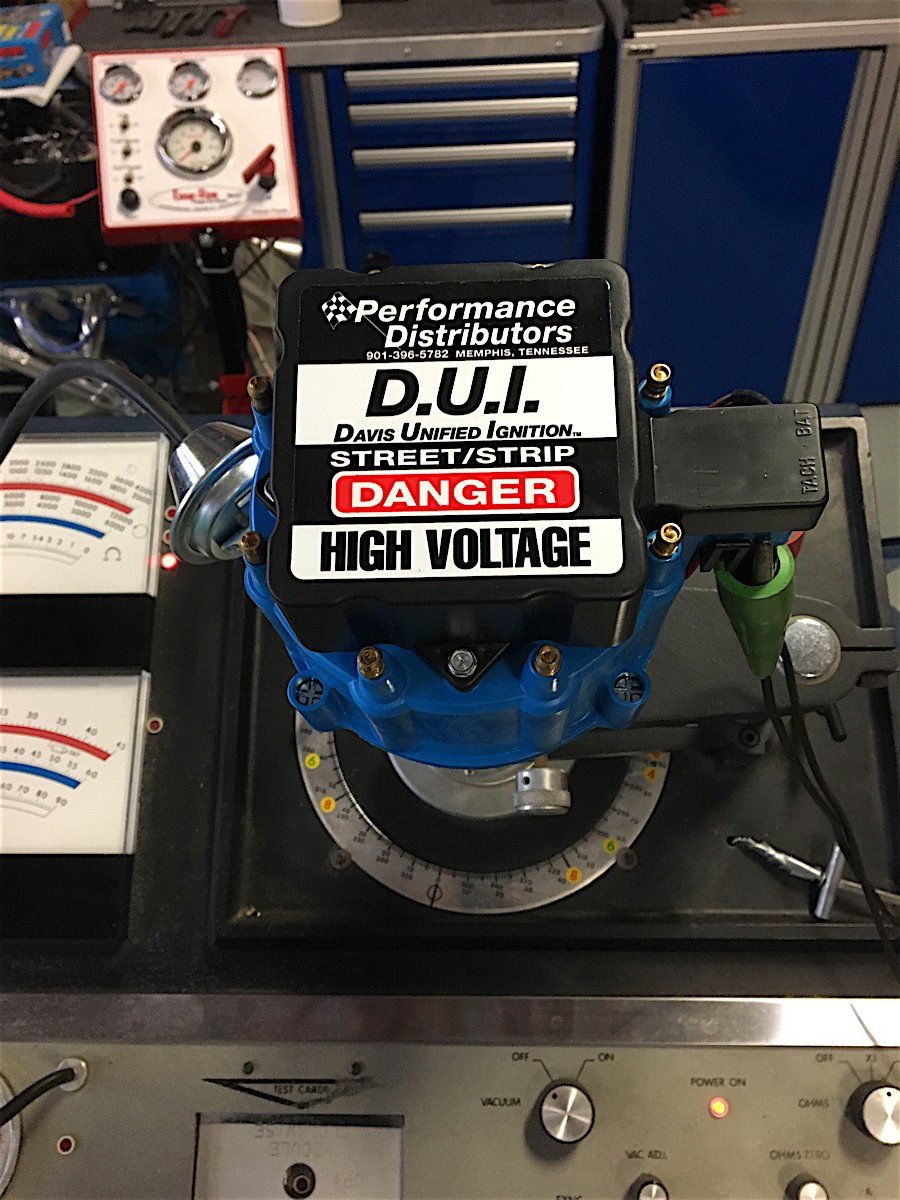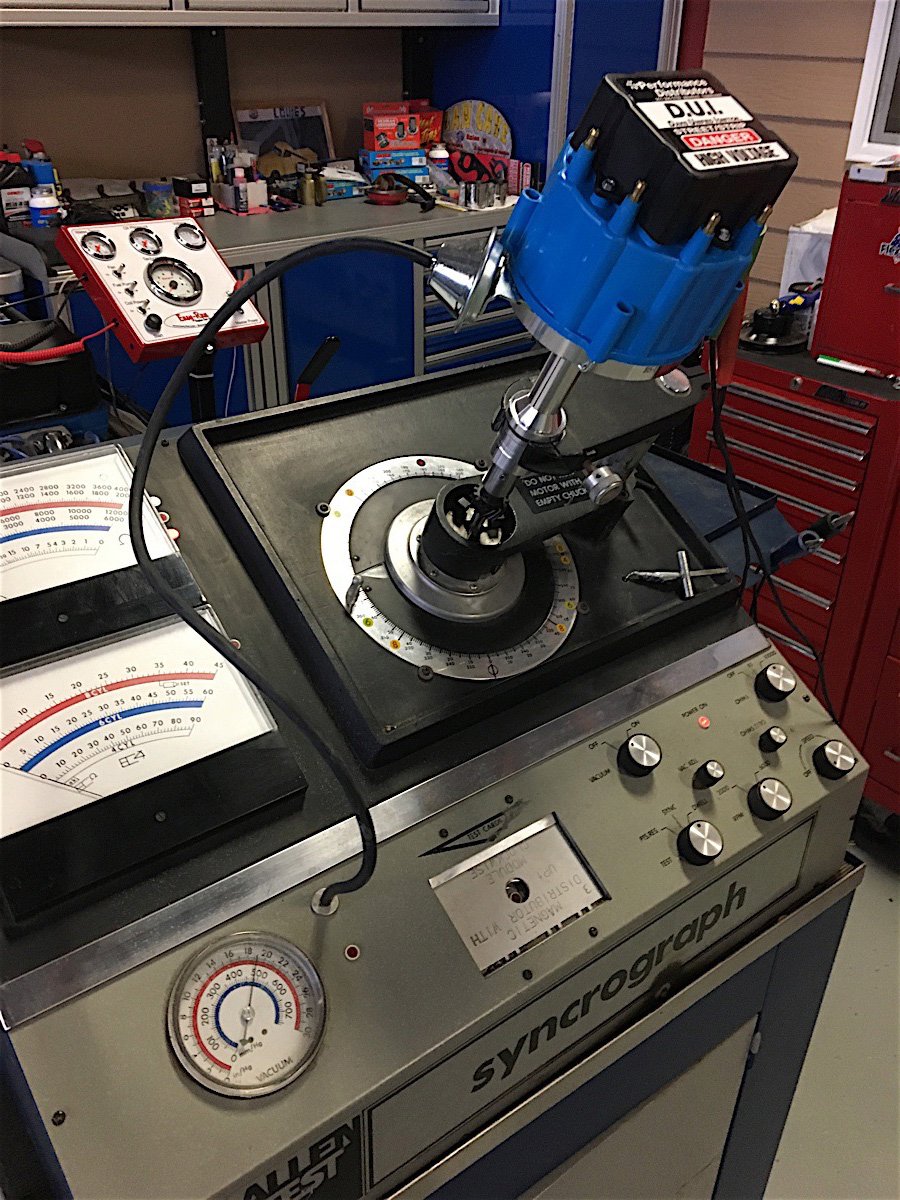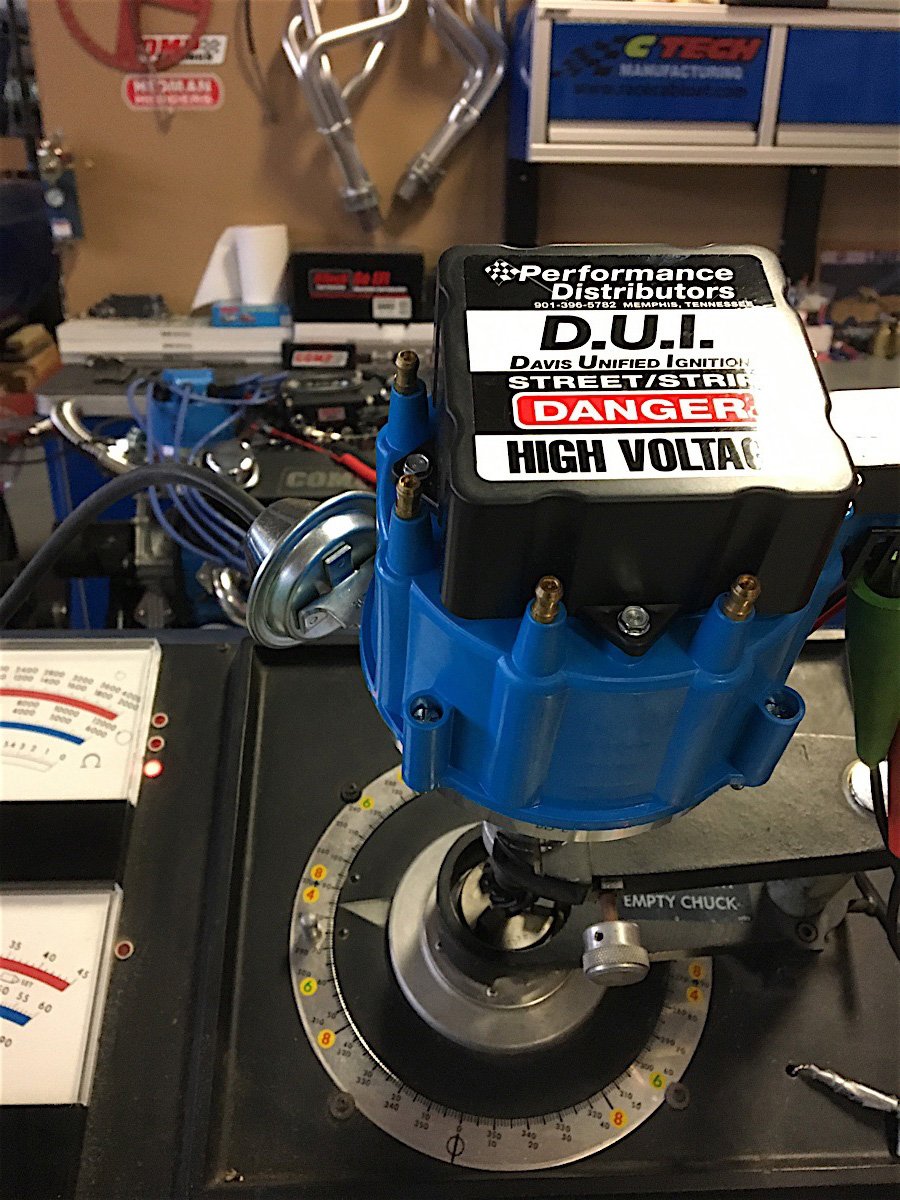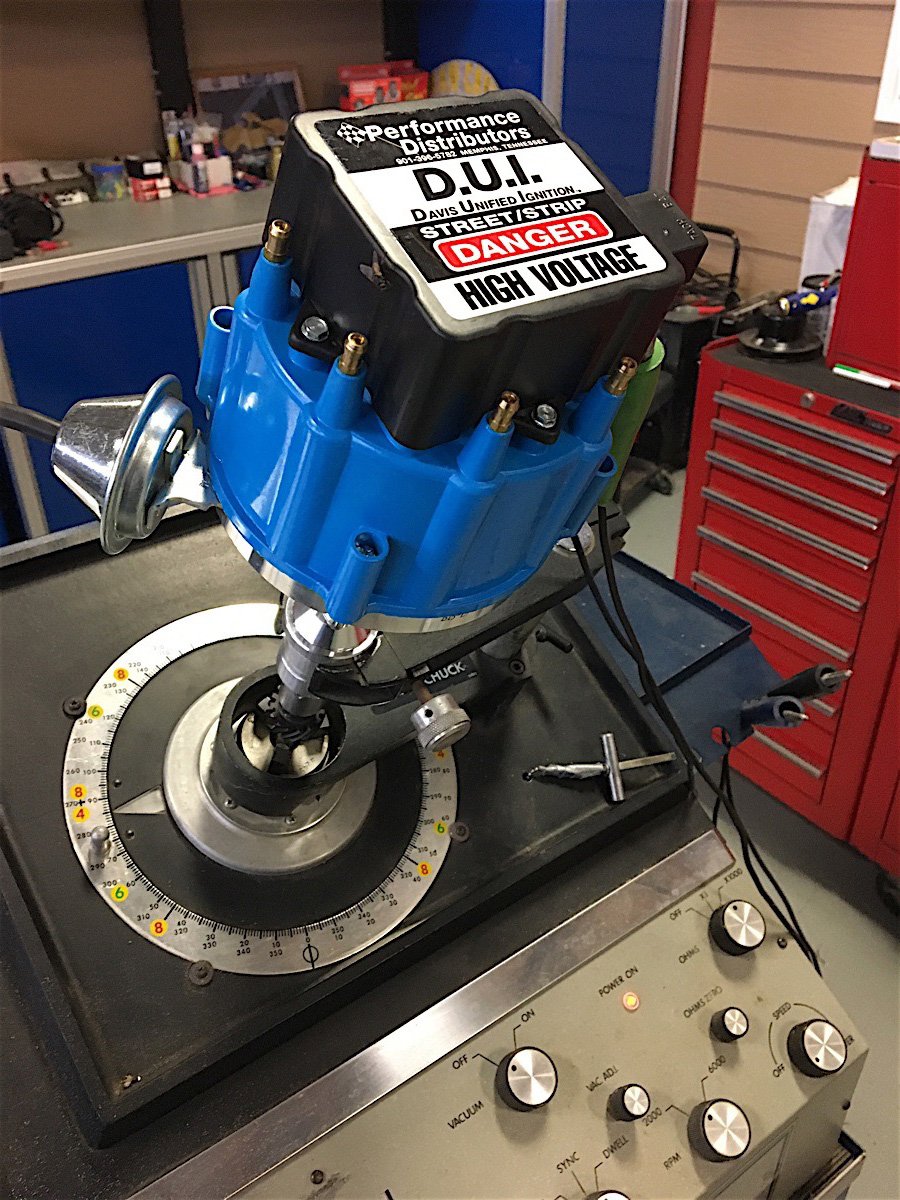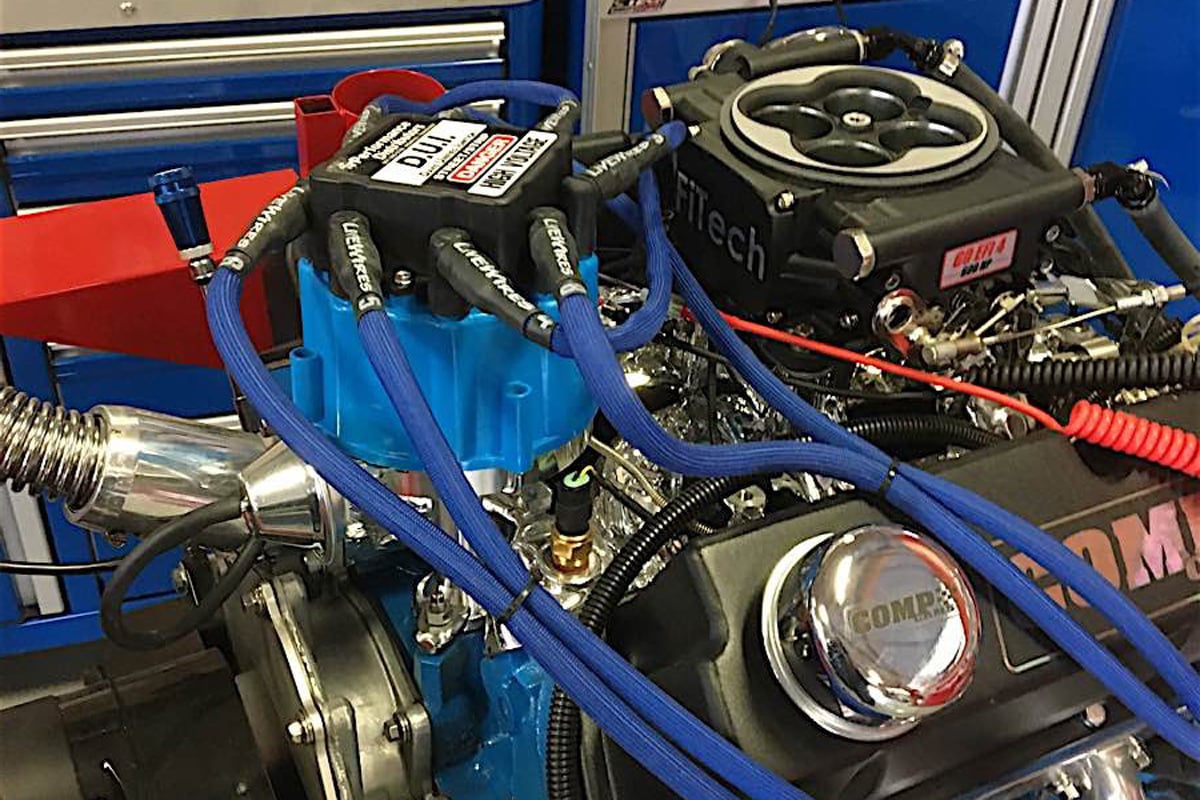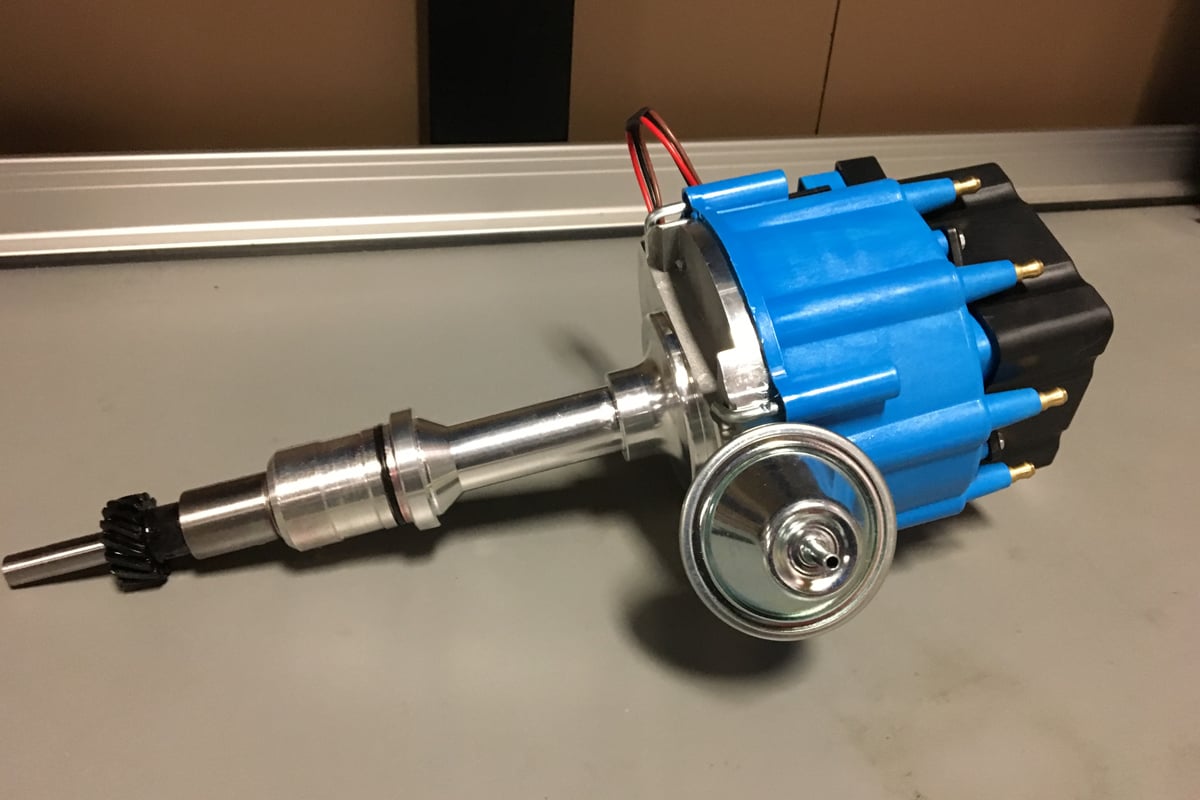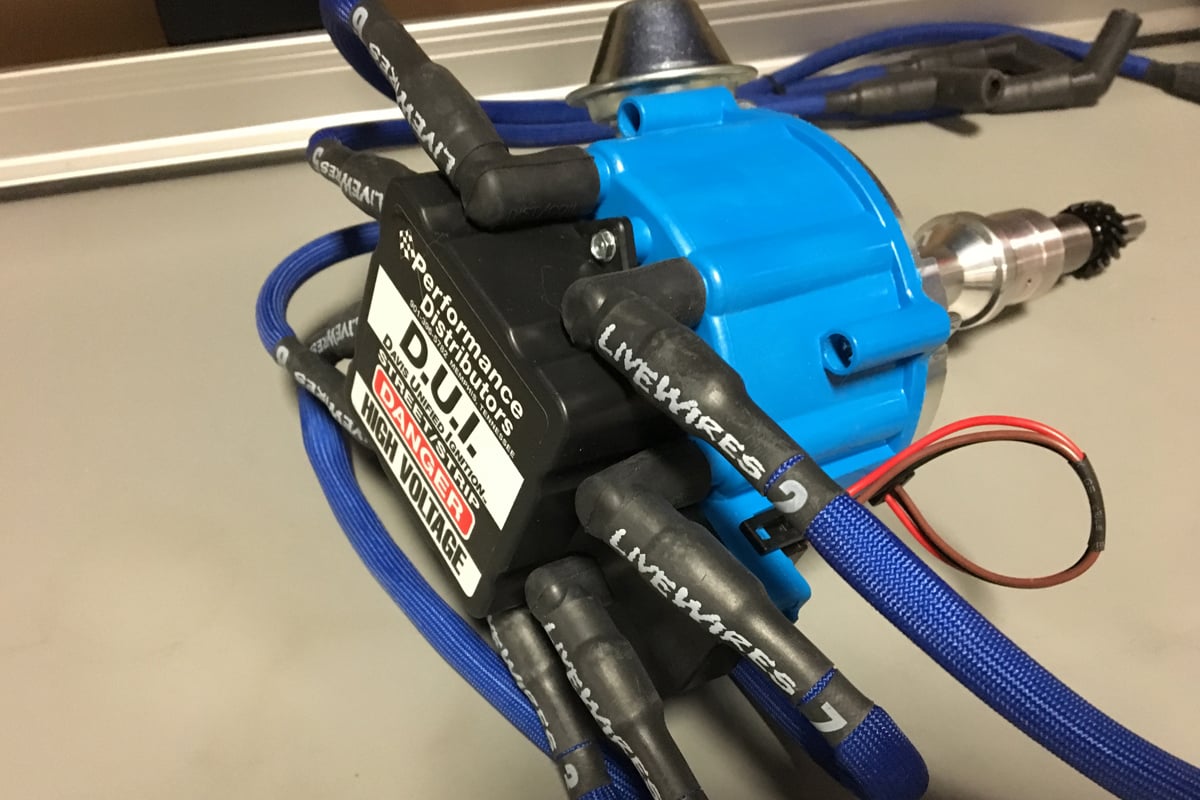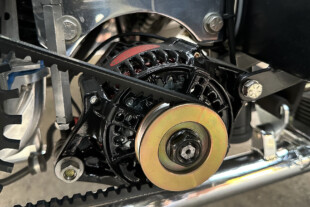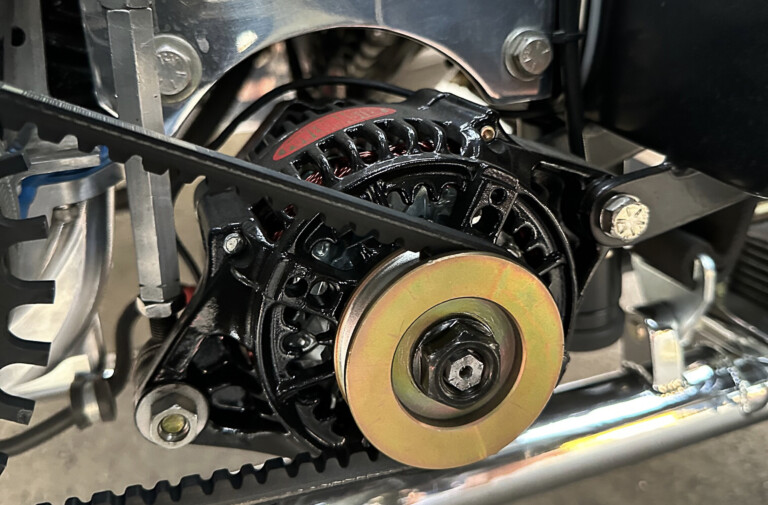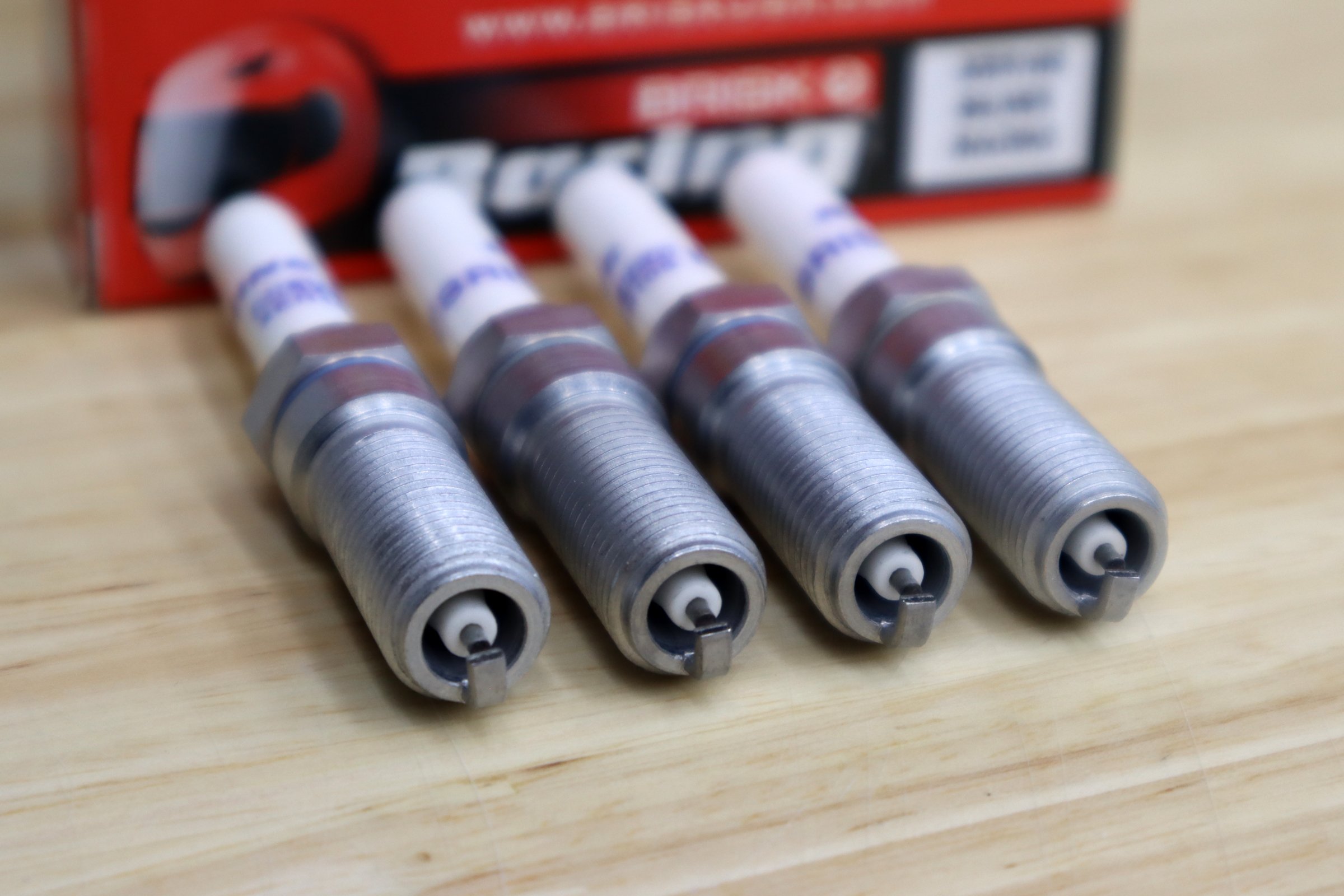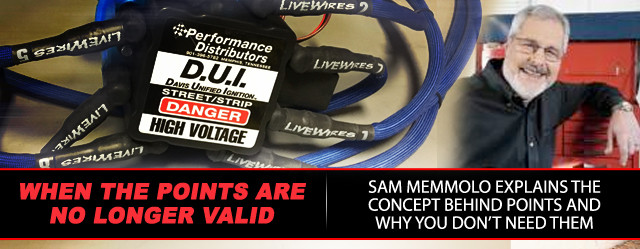 Hello my friends. By now I’m sure you have all seen the ads for replacement ignition distributors, such as the DUI distributor that we’re installing from Performance Distributors. These components are to replace your vehicle’s points distributor with electronics that are far more accurate and dependable. The advertisements are loaded with features and benefits including more power, better idle quality, quicker starts, and better overall performance and economy.
Hello my friends. By now I’m sure you have all seen the ads for replacement ignition distributors, such as the DUI distributor that we’re installing from Performance Distributors. These components are to replace your vehicle’s points distributor with electronics that are far more accurate and dependable. The advertisements are loaded with features and benefits including more power, better idle quality, quicker starts, and better overall performance and economy.
What the ads fail to do is give you the technical details of how and why these miracles occur. So I will attempt to break it down for you so you can be armed with the necessary knowledge that may help you make the right choice when making a purchase.
Since the introduction of ignition distributors in the very early days of internal combustion engines and up to 1975, distributors were equipped with ignition points. There were a few specialty cars with electronic ignition in the early seventies, but 1975 was a banner year in the United States.
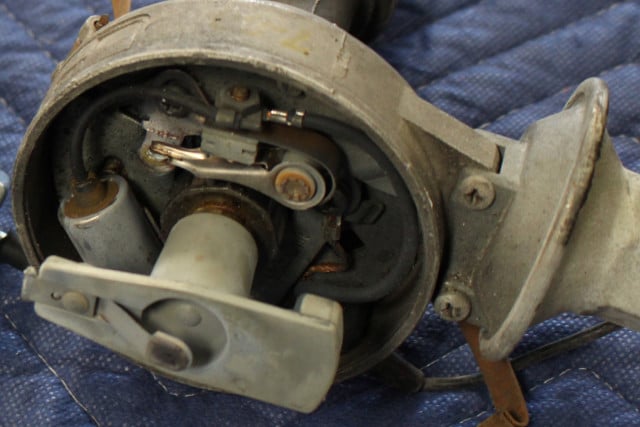
An early Ford distributor with a points-type ignition. When replacing the points, you couldn’t just bolt them in, you actually had to adjust the gap and the dwell.
1975 brought us unleaded fuel, catalytic converters, and in most domestic brands, electronic ignition. The points were replaced with an electronic ignition module. That was the era when tailpipe emissions were under fire from folks wanting to clean up our atmosphere, when emission controls of every description were introduced, Tetraethyl lead was removed from gasoline, and cars were suffering from poor performance as they choked to death during the learning curve.
For the record, I am all about clean air and water, as well as a healthy planet. We have attained several milestones and benchmarks from the early days until the present. So here is my attempt to explain the basics of electronic ignition.

In two part circuitry as described, the primary circuit would be what supplies the electrical power, the secondary is the part that supplies the voltage.
Two-Part Circuitry
Distributor ignition systems are comprised of two parts: a primary circuit and a secondary circuit. The primary circuit is comprised of everything from the battery, ignition switch, ballast resistor (if equipped), ignition coil, condenser, and the points.
We will use a 12 volt negative ground system here, but a 6 volt system is the same deal. The primary current (or battery current), flows from the battery through the ignition switch, on to the coil and then to the points. The ignition contacts or points are opened and closed during distributor rotation via a series of lobes on the distributor shaft.
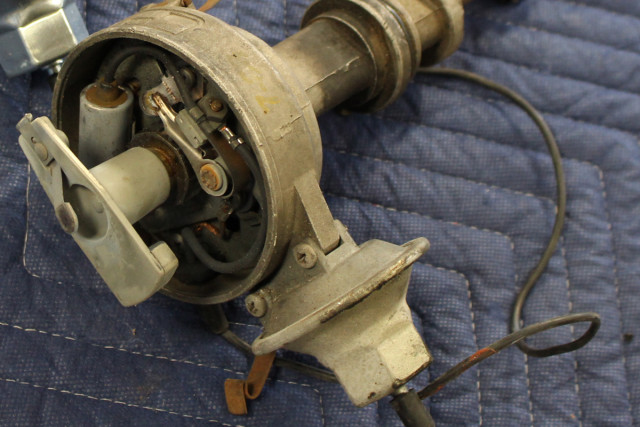
Sometimes the idea of having to install and adjust new points makes the whole process not worth the effort, and an electronic distributor makes things much simpler.
The job of the points is to open and close the circuit to ground so current can pass through the coil and build up secondary spark energy. The points’ open gap was set with a feeler gauge or was done more accurately with a dwell meter. The closed time of the points was measured in degrees of dwell and is referred to as the “on-time” for the coil. Usually about 30 degrees of dwell was sufficient for an eight cylinder engine.
A circuit is only complete when voltage can push the current from battery positive, all the way back to battery negative or ground. The points (when closed) completed the primary circuit to ground. When the points opened by the cam lobe, the circuit was interrupted, causing the magnetic field in the coil to collapse. (This tells you why a good engine ground connection is so critical.)
When the current was flowing in the circuit with the points closed, the primary windings of the coil were inducing a magnetic field into themselves and the secondary windings of the coil. This process of induction is how 12 volts can be turned into 30,000+ volts by the ignition coil. There are approximately 100 times more secondary windings than primary windings in a carbon core oil-filled coil or epoxy E-core coil.

You can see in this graphic that dwell is the time the points are closed, making contact and providing the points to complete the circuit. As the number of cylinders grows, the dwell and the time the points are open decrease. If the gap is too small, you have excessive dwell, and if the gap is too large, you don’t have enough dwell. For this reason, it’s been a royal pain to adjust properly for many people.
The primary windings (through the process of self-induction) step the primary voltage up to about 300 volts. When the points open, the circuit is interrupted and the magnetic field that was building up in the coil collapses, inducing the secondary windings to discharge high voltage (now 30,000 volts+) through the carbon core to the coil tower and on to the distributor via the coil wire. The current in this circuit is about 5 amps, but it produces a lot of voltage. You know this if you have ever been bitten by a leaky wire!
In addition to the wear on the points’ rubbing block and erosion of the tungsten contacts themselves, the other energy limiting factor is mean old Mr. Dwell. The dwell is fixed in a points ignition. It does not vary unless something changes or wears. So think about this:
If dwell is “On-Time” and the engine RPM is idle speed (750 rpm), the coil’s on-time is much greater in clock time at idle than it would be at say 4,000 rpm. The higher the RPM, the less time the coil has to build secondary spark energy.
The reason for all this talk about points type ignition is to set the stage for one of the greatest features of electronic ignition. Variable dwell!
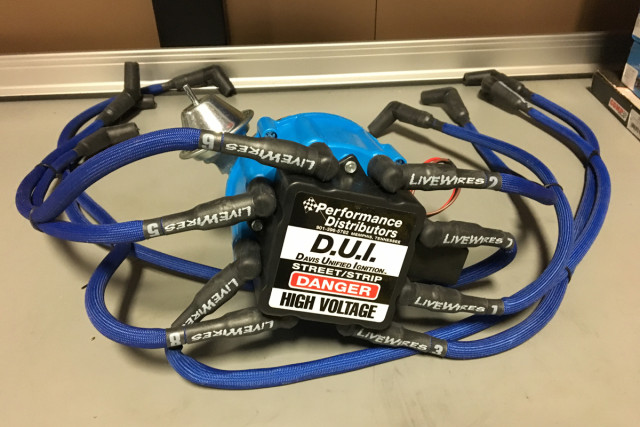
The Davis Unified Ignition takes HEI a step further and provides performance to your distributor that you can count on.
Electronic Ignition Systems
The electronic ignition module has the ability to increase the dwell as RPM increases. Some V8 modules will increase dwell from 30 degrees to 45 degrees. That translates into longer on-time for the coil, allowing for a much hotter spark at higher RPM.
All of the maintenance issues of points ignition disappear with electronic ignition. No parts replacement, no lubing the cam or rubbing block and no adjusting gaps or setting dwell. This allows longer periods of operation at optimum spark production.
Not everyone has the equipment to fine tune your distributor, but for those who want to set the dwell and timing curves, this is how it's done.
That’s why they named it H.E.I. or High Energy Ignition. Remember when points closed up due to rubbing block wear, dwell increased and ignition timing was retarded. That is the reason for setting dwell before adjusting base ignition timing. Dwell affects timing, but timing does not affect dwell.
Late or retarded ignition timing led to decreased power, plug fouling due to less spark energy, higher combustion chamber temperatures and of course – increased tailpipe emissions.
So with all that being said, how do you choose what is right for your particular ignition distributor upgrade?
Most of us are familiar with the General Motors A/C Delco H.E.I. distributor introduced in 1975 on most GM production models. It was simple: coil in the cap, electronic ignition module, and a pick-up coil that triggered the modules via an AC waveform. The AC waveform generated by the pick-up coil works very similar to an old military crank style field telephone.
The DUI distributor on a small-block Ford, ready to go into a 1992 Mustang. This is not your typical 5.0, note the FiTech EFI system in place of a carburetor. Good fuel and good spark will make this a great running engine.
Inside the electronic ignition module there are several components including a current limiter to keep the primary current in check and a Schmitt Trigger. The Schmitt-trigger converts the AC waveform generated by the pickup coil into a square wave. This is needed to trigger the transistor in the module that opens and closes the primary circuit.
The simplicity was a single wire 12 volt, ignition switched supply and the distributor housing made the ground as it was secured to the cylinder block. No coil wire, no external wires to the coil, no remote mounted coil. Just a simple, easy to install and bullet-proof system.
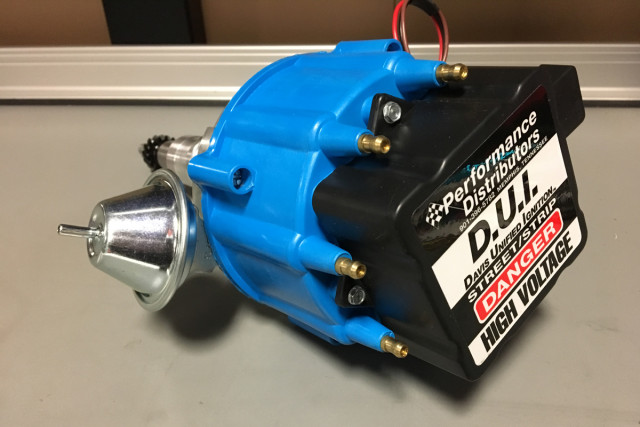 DUI From Performance Distributors
DUI From Performance Distributors
Here is a tip, and this is what I use: A D.U.I. system from Performance Distributors in Memphis.
Performance Distributors has been a leader in high performance ignitions systems for decades. They developed the Davis Unified Ignition or D.U.I. They can custom tailor the spark advance curve for your application as well as supply a complete distributor that has a 50,000 volt coil, a module that has been engineered to increase the dwell for maximum coil saturation, and some are even available with an adjustable slip collar to compensate for machined blocks, heads and intakes.
There are less expensive units available but they don’t offer the reliability or the hot spark found in a D.U.I., all-new distributor custom tailored for you. If you purchase a cheapie at a swap meet, ask yourself this question: Who ya’ gonna call? If it fails and odds are that it will, good luck with trying to get some real tech help.
There's no need for an external coil with the DUI distributor, it's under the cap and you only need a power and ground connection.
Performance Distributors has great customer service and they know their business and their customers. The company founder was a hot rodder and racer that became known as the guy who could dial in an advance curve better than most folks and get the most out of a performance engine. That tradition was handed down from the company’s founder and you can even read about their history on their website.
The correct advance curve is critical to engine performance and engine life. Too little advance means poor power and economy, while too much advance can lead to damaging engine detonation. The experienced techs at Performance Distributors can set the proper advance curve for your particular engine application. I use my distributor scope to check and set curves for my engine builds.

Livewires are spiral wound to prevent electronic interference, and are available in several colors to match or contrast your engine. Each set is custom tailored to your application, labeled with numbers for a foolproof installation. The high-temp sleeving will protect the wires up to 1,400 degrees.
They also offer their Live Wires spark plug wires (which are awesome) and a whole line of tried and proven ignition products for many street and racing applications. Performance Distributors even has Chevy Vortec distributors that are plug-and-play. So if you are rebuilding or just want to upgrade from that plastic OEM distributor, this is definitely the way to go.
We not only make the DUI(HEI) for Chevy’s but we also have adapted its technology to Ford, Dodge, Toyota, and many other applications. -Steve Davis, Performance Distributors
With constant product innovation and engineering, Performance Distributors delivers more than just a hotter spark. They pledge to deliver more torque, more efficiency and better throttle response.
Don’t trust your ride to a cheap, unreliable distributor. Check out Performance Distributors and see what they have for you. You and your engine will say it’s the best move you ever made.

The Ford small-block has plenty of bling, lots of go-fast parts, and a DUI distributor for trouble-free ignition.
Sam Memmolo is a 45 year veteran of the automotive industry, and is well known in business circles from the original equipment manufacturers to the aftermarket and performance segments. Sam hosts and produces his syndicated Sam’s Garage Radio Show, which provides consumers and shop owners with a wide spectrum of advice, industry news, and product awareness, all presented in an easy to listen to entertaining format. Sam is heard on 50 radio stations, and the internet. Sam wrote and co-hosted the incredibly successful TV show Shadetree Mechanic on TNN, which had a terrific run of 190 episodes spread over eight years. Later he wrote and co-hosted Crank and Chrome, also seen on TNN. Sam, along with his pal Dave Bowman, set the benchmark for automotive TV programming as Sam became Executive Producer and Host of Two Guys Garage on SPEED. Semi-retired, Sam and his wife Diana live in Alabama with their hot rods and rescued dogs



